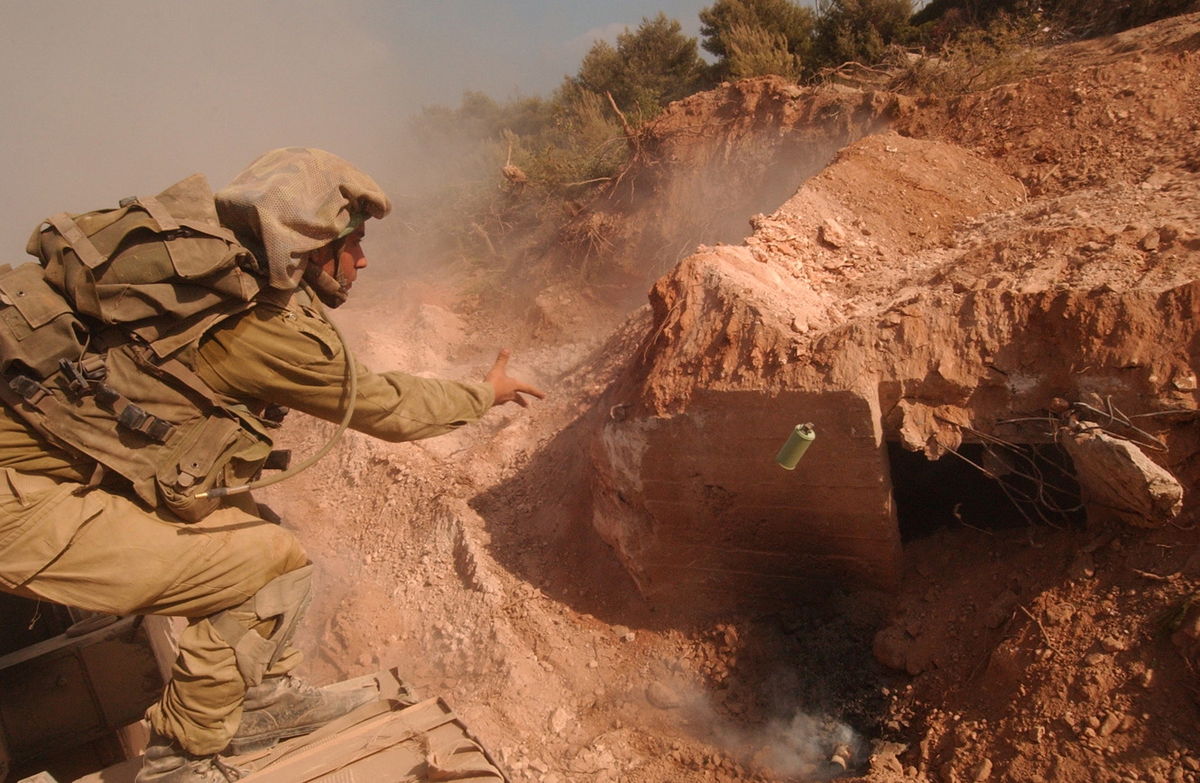
Second Lebanon War
LebanonThe 2006 Lebanon War, also known as the Second Lebanon War, was a 34-day military conflict involving Hezbollah paramilitary forces and the Israel Defense Forces (IDF). It took place in Lebanon, northern Israel, and the Golan Heights, starting on 12 July 2006 and ending with a United Nations-brokered ceasefire on 14 August 2006. The formal end of the conflict was marked by Israel lifting its naval blockade of Lebanon on 8 September 2006. The war is sometimes seen as the first round of the Iran–Israel proxy conflict, due to significant Iranian support for Hezbollah.[234]
The war began with a Hezbollah cross-border raid on 12 July 2006. Hezbollah attacked Israeli border towns and ambushed two Israeli Humvees, killing three soldiers and abducting two.[235] This incident was followed by a failed Israeli rescue attempt, resulting in additional Israeli casualties. Hezbollah demanded the release of Lebanese prisoners in Israel in exchange for the abducted soldiers, a demand Israel refused. In response, Israel conducted airstrikes and artillery fire on targets in Lebanon, including Beirut's Rafic Hariri International Airport, and initiated a ground invasion of Southern Lebanon, accompanied by an air and naval blockade. Hezbollah retaliated with rocket attacks on northern Israel and engaged in guerrilla warfare.
The conflict is believed to have killed between 1,191 and 1,300 Lebanese people,[236] and 165 Israelis.[237] It severely damaged Lebanese civil infrastructure, and displaced approximately one million Lebanese[238] and 300,000–500,000 Israelis.[239]
United Nations Security Council Resolution 1701 (UNSCR 1701), aimed at ending hostilities, was unanimously approved on 11 August 2006 and later accepted by both Lebanese and Israeli governments. The resolution called for the disarmament of Hezbollah, the withdrawal of IDF from Lebanon, and the deployment of the Lebanese Armed Forces and an expanded UN Interim Force in Lebanon (UNIFIL) in the south. The Lebanese Army began deploying in Southern Lebanon on 17 August 2006, and the Israeli blockade was lifted on 8 September 2006. By 1 October 2006, most Israeli troops had withdrawn, although some remained in the village of Ghajar. Despite UNSCR 1701, neither the Lebanese government nor UNIFIL has disarmed Hezbollah. The conflict was claimed as a "Divine Victory" by Hezbollah,[240] while Israel viewed it as a failure and a missed opportunity.[241]
